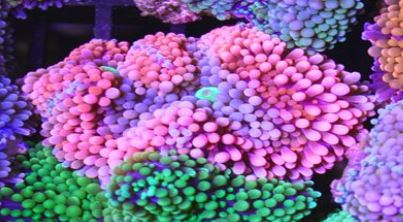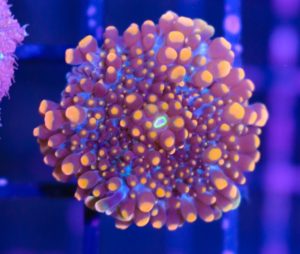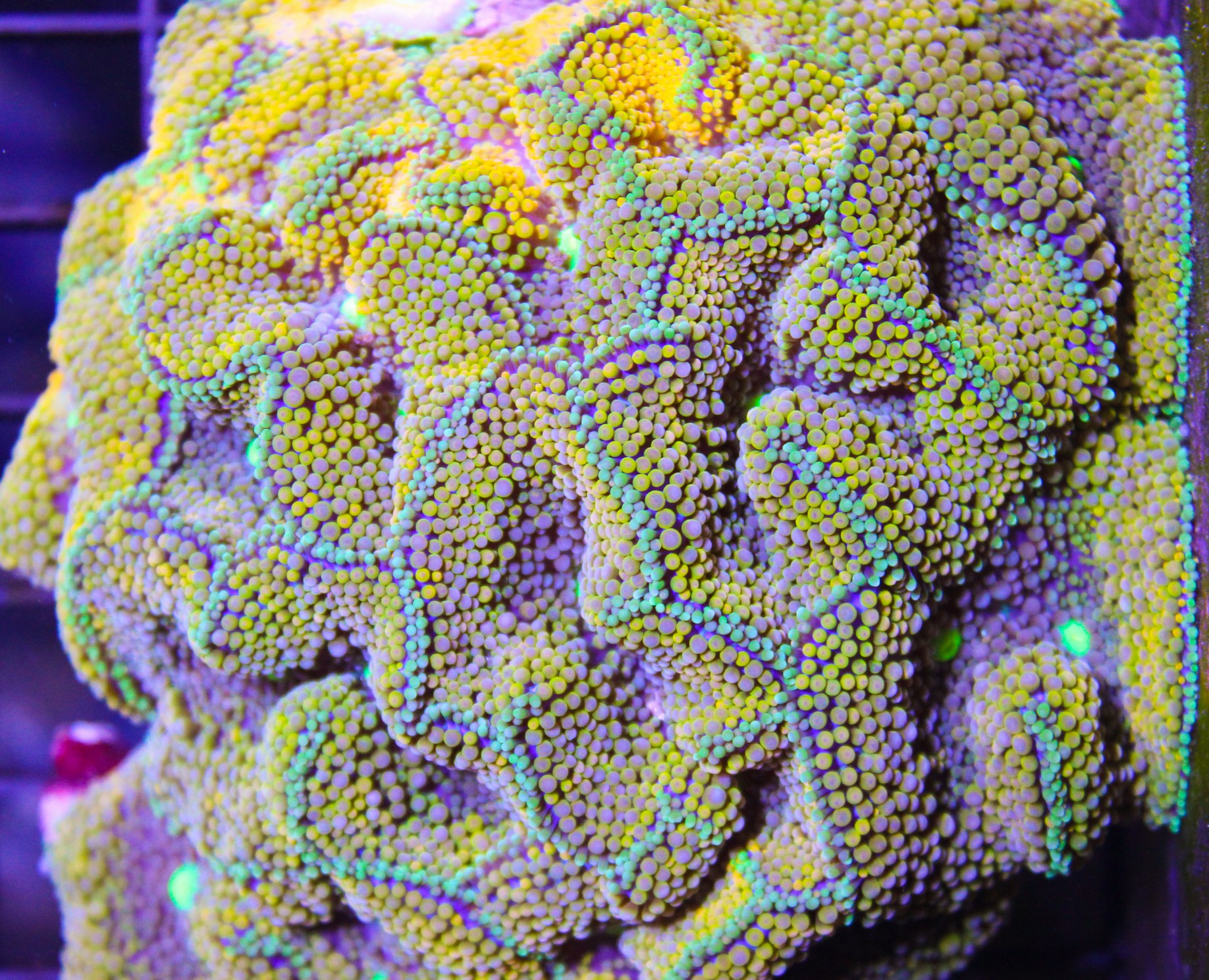
A mix of colorful healthy Florida Ricordea
Common Name: Ricordea. Nick name: Ric
Latin Name: Ricordea florida
Order: Corallimorpharia
Family: Ricordeidae
Origin: Carribean
Category: Softy
Care Level: Beginner
Temperament: Semi-Aggressive
Lighting: Low
Waterflow: Low – Medium
Placement: Low
Colors: Various
Growth Speed: Slow

An extremely rare pink ricordea
Appearance
When it comes mushroom type coral, there are few that can compare to the striking beauty of the florida ricordea. Its characterized by its distinct bubbly appearance and vivid fluorescent colors. Often confused with the yuma species of mushroom, the ricordea exhibits smaller and higher density bubbles. They come in almost every color imaginable and often with two or even three colors displayed through the body, bubbles, skirt and even mouth. The most valuable of the ricordeas are the rainbows which display the most complex color varieties. The rarest of the ricordeas are pink ones, if you ever see one don’t hesitate to get it. You can tell if a ricordea is healthy generally by its size, color and mouth. Healthy ricordeas are plump, deep in color ( i.e. not bleached, translucent or highlighter in color) and their mouths are closed. Avoid buying ricordeas that seem to be spewing brown or black strings from their mouth as it is a stress sign. The only exception is when they are eating or have eaten.

A text book example of a yuma. Notice how the bubbles are further apart and larger.
Placement & Care
Florida ricordea as suggested by its name are native to florida and the Caribbean as a whole. They are very easy to keep and grow and do well in nano or even pico tanks. They are highly sought after in Asian and Australian markets as they are difficult to find over there. Ricordeas are found in shallow waters which would suggest they prefer high light, however they are often found on the under side of rocks where they recieve very low light. They are accustomed to high levels of flow in the wild but will do well thrive under flow in conditions in home aquariums. They prefer high nutrient water and are tolerant of elevated nitrate and phosphate levels like many other mushroom and soft corals. They are often placed lower down in aquariums and do well under strong blue led lighting. It is common to group ricordeas together to form gardens and they will not hurt one another. They should however not be placed directly next to other corals as they carry a powerful sting. They sting through direct contact and do not have sweepers. In our experience they can be placed directly to zoanthids safely and some soft corals.

A beautiful example of a wild rock complete full of ricordeas from Cuba
Growth & Feeding
Florida Ricordea grow in a unique way that is different Ricordea yuma and some other mushrooms. Instead of dropping baby like discosoma or yuma, the ricordea generates a mouth and then splits or pulls away from the original mouth.They grow relatively slow compared to other mushrooms corals. They are a non invasive coral species. They will accept most coral foods and really appreciate fauna marin coral dust.

Variation
Florida ricordea are amazing because they come in so many color verities. Their bodies, mouth, skirts and inner lines can be a combination of almost any color. Pink and Blues probably being the most rare and orange being the most common. They are striking and highly sough after coral


